
Will 2017 beat 2016 in Startup funding? Check this: Rocket Internet closes $1B fund
Rocket Internet closes $1B fund, the largest out of Europe to date: Posted yesterday by Ingrid Lunden: https://techcrunch.com Got a venture & want to promote? [krown_form label_name="Name" label_email="Email" label_subject="Subject" label_message="Message" label_send="Send" email="" success="" error=""] If you thought the problems Rocket Internet has had bringing its portfolio of startups and its business overall into the black would have spelled setbacks for future investing, think again. This week, the firm — based out of Berlin — reported that it had raised a new $1 billion fund, the biggest tech fund of any VC firm to date in Europe, it claims. The Rocket Internet Capital Partners fund, as it is called, will focus both on early and later stage investments, and marks a shift of sorts for Rocket Internet. The company will put some of the investment into existing portfolio companies — the company is known for incubating and growing e-commerce businesses around the globe built on models usually pioneered by others (‘clones’ is the less charitable term you may have heard) — but it will also start making more investments in startups beyond those Rocket Internet itself had a hand in starting. Earlier this month, Rocket Internet was part of a $100 million round for Funding Circle, the P2P lending startup based in London. A spokesperson said that it’s been making investments out of the fund for over a year now. “RICP has made investments since its first closing in January 2016. The fund seeks to invest in key focus areas of the Internet sector including marketplaces, e-commerce, financial technology, software and travel. Among the investments are Rocket Internet founded companies as well as others,” said the spokesperson. She declined to comment on which other companies are in the portfolio now or will be in the future, but some of that has been made public anyway. A few of its many recent investments, in addition to Funding Circle, include a seed round for recruitment service UShift; a large cash infusion of $365 million in the Global Fashion Group, an entity created by Rocket to merge several of its online fashion retailing properties under one umbrella (this is one of Rocket’s more problematic businesses and came as a down round); and a smaller round for CaterWings, a corporate catering service. Despite issues Rocket Internet has had with existing portfolio companies and its own finances as a publicly traded company, it appears that investors still believe that in the long term, Rocket can provide decent returns. All it takes are a couple of big hits to shift the balance — and Rocket has, over its history, had enough of these with large sales to Groupon, eBay and others to give it a good track record. In this latest fund, Rocket committed 14 percent of the total, or $140 million, while an unnamed “diverse group of global investors, including financial institutions, pension funds, asset managers, foundations and high net worth individuals” contributed the rest. “RICP having reached the hard cap of $1 billion shows the strong interest of leading investors, who share the enthusiasm for the attractive investment opportunity RICP presents”, said Oliver Samwer, Rocket Internet’s CEO, in a statement. Rocket Internet is a public traded company: 19.62 +0.12 (0.59%) Jan 20 - Close ETR data delayed by 15 mins - Disclaimer Currency in EUR Range 19.30 - 19.67 52 week 16.35 - 29.25 Open 19.48 Vol / Avg. 177,757.00/176,728.00 Mkt cap 3.24B P/E - Div/yield - EPS -4.56 Shares 165.14M Beta - Inst. own -
Read More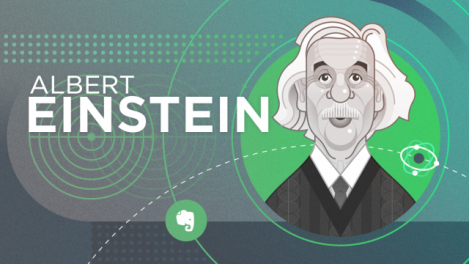
Albert Einstein’s Unique Approach to Thinking
Posted by Taylor Pipes on 11 Jan 2017 from #evernote : I never came upon any of my discoveries through the process of rational thinking.” — Albert Einstein In the arena of scientific achievement and the quest to discover genius, Albert Einstein stands alone. He remains a profoundly important figure who undertook extraordinary, groundbreaking work that not only shaped the pillars of modern physics but greatly influenced the philosophy of science. Quite literally, Einstein changed the way we see and travel across the world and cosmos. He was responsible for the world’s most famous equation and for discovering the theory of relativity, considered to be mankind’s highest intellectual discovery. Einstein went about his work in unique ways. From visualization to daydreaming and even a dash of musical inspiration, Einstein’s creative insights and philosophical vantage points help guide the work we tackle today. The power of play “A new idea comes suddenly and in a rather intuitive way. But intuition is nothing but the outcome of earlier intellectual experience.” — Albert Einstein Einstein took breaks from his work to play the violin. Beethoven favored “long, vigorous walks” in which he carried a pencil and blank sheet music. Mahler, Satie, and Tchaikovsky all believed in the power of the regularly-scheduled mid-day walk. For some, it’s walks and breaks in the day. For others, it’s applying time to deep interest in areas that are completely different from their professional work. From music to painting, the pursuit of creative endeavors has the ability to help us discover and connect what we know to what we aspire to know. He viewed taking music breaks as an important part of his creative process. In addition to music, he was a proponent of ‘combinatory play’ — taking seemingly unrelated things outside the realms of science (art, ideas, music, thoughts), and blending them together to come up with new ideas. It’s how he came up with his most famous equation, E=mc2. “Combinatory play seems to be the essential feature in productive thought,” Einstein wrote in a letter (italicized in part below) to Jacques S. Hadamard, who was studying the thought process of mathematicians. “…Words or the language, as they are written or spoken, do not seem to play any role in my mechanism of thought. The psychical entities which seem to serve as elements in thought are certain signs and more or less clear images which can be “voluntarily” reproduced and combined…but taken from a psychological viewpoint, this combinatory play seems to be the essential feature in productive thought — before there is any connection with logical construction in words or other kinds of signs which can be communicated to others.” —Albert Einstein Creativity can’t be taught, but it can be harnessed and embraced. Nothing stokes the fires of our creative wants more than the thought of instantaneous creative inspiration—the lightning bolt or apple falling from the sky. In reality, creativity blossoms when you feed it like a fire hungry for more logs. And, creativity reaches its maximum potential when it’s stoked in combination with knowledge, ideas, and skills you’ve acquired throughout life. It’s why filmmakers seek out inspiration in art museums and why composers find notes in the daily music of everyday life. Ideas and interludes As Maria Popova, author of Brainpickings writes, organic synthesis of ideas happens when we step back and examine the patterns. Don’t mistake these moments for the illustrious and oft-debated lightning bolt of inspiration, even though they can happen while we are walking, showering, or even meditating. Think of them as important moments that are part of a sequential creative process that happen while we work and play. Think of the work as peering through the lens of a microscope in a lab, and the creativity starts to percolate when you take a break from the lab, pick up an instrument, or go for a walk. These interludes helped Einstein connect the dots of his experiments at opportune moments when he picked up the violin. “I fell in love with Albert because he played Mozart so beautifully on the violin,” recalled his second wife, Elsa. “He also plays the piano. Music helps him when he is thinking about his theories. He goes to his study, comes back, strikes a few chords on the piano, jots something down, returns to his study.” Beauty in the science “This kind of mental play uses both unconscious and conscious thinking: scanning various stimuli and information, perceiving patterns and clear or hidden similarities between things or ideas, and playing with their interconnections, relationships, and links,” notes researcher Victoria Stevens, who explored the neuroscience of creativity in To Think Without Thinking. Stevens notes that the link between problem solver and creative thinker is essential. “Combinatory play provides a fertile field for neuroaesthetic investigation into the direct link between play, imagination, creativity, and empathy,” she writes. While this imaginative combinatory play was an essential part of Einstein’s productive thought, the same type of thinking and a playful nature are essential to all artistic creations. “Personally, I experience the greatest degree of pleasure in having contact with works of art,” Einstein said. “They furnish me with happy feelings of intensity that I cannot derive from other sources.” Einstein’s work was greatly influenced by art, and influenced artists, in turn. Salvador Dali’s surrealist work has roots in the tiniest scientific elements of Einstein’s work. Dali had great interest in quantum mechanics and nuclear physics, and these atomic particles are the foundation of his painting The Persistence of Memory, thought by some to represent the flexing of time. Daydreaming FTW Einstein’s early academic and learning struggles are often debated. As a 15 year old, he dropped out of school. Einstein left schoolbecause his teachers didn’t approve of visual imagination for learning, skills which became fundamental to his way of thinking. “Imagination is more important than knowledge,” Einstein would say. It’s no coincidence that around the same time, Einstein began to use thought experiments that would change the way he would think about his future experiments. His first, at age 16, saw him chasing after a light beam which would help launch his discovery of special relativity. His innate ability to conceptualize complex scientific details became a hallmark of his research. His work on gravity was influenced by imagining riding a free-falling elevator. This flight of fancy eventually led him to understand that gravity and acceleration were essentially the same. Using these simple thought experiments, Einstein was able to understand that time and space are both shaped by matter—the basis for the theory of general relativity. It’s astonishing that this thought experiment changed everything we thought we knew about the universe. Newton’s ideas of the universe were one-dimensional, but Einstein proposed that our universe was four dimensions, where stars, planets, and celestial bodies formed a “fabric” that were dynamically influenced by the bending and curving of gravitational pull. Only recently has mankind been equipped to explore much of what his theory had proposed—supernovas, black holes, and the evolution of our solar system. An enduring legacy Nearly a century later, Einstein’s legacy remains strong as ever. His theories of gravity, space, and time continue to influence a new generation of scientists. As Einstein continued his work, he maintained a natural sense of understanding of the world and compassion and kindness about people around him. It’s only fitting that he was very aware of the incredibly short time we have on this planet, while at the same time understanding that all the work he accomplished was directly related to those who came before him. It’s comforting to know that he realized his work would be instrumental for all those who had yet to arrive. “How strange is the lot of us mortals! Each of us is here for a brief sojourn; for what purpose he knows not, though he sometimes thinks he senses it. But without deeper reflection one knows from daily life that one exists for other people…a hundred times every day I remind myself that my inner and outer life are based on the labors of other men, living and dead, and that I must exert myself in order to give in the same measure as I have received and am still receiving,” Einstein said. Let us know you ideas / thoughts / feedback please: @angelica5988 @thomasadmin @richard @yeronlocodor
Read More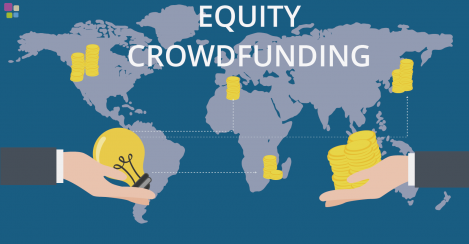
Is 2017 the year of equity crowdfunding? @InvestorDaily - Jonny Wilkinson
The equity crowdfunding sector saw a vast number of changes throughout last year, and looking back on the field's achievements thus far provides good insight in to where it will go in 2017. What a difference a year makes, 2016 was full of incredible headlines across the spectrum of politics and international affairs – and the equity crowdfunding industry was no exception. From dramatic shakeups by established companies to surprising decisions from government regulators, 2016 was a dynamic year for the sector. They say if you want to know where your current path is taking you, look to your past. In an endeavour to predict where Australia is heading, here’s a look at the most significant events from 2016 on the equity crowdfunding industry, both at home and abroad. Australian government stance on equity crowdfunding Unquestionably, Australian politics has had an eventful few years, with the last 12 months alone seeing a bitterly contested election, reshuffling in the cabinet, and hundreds of new policy decisions. Turnbull has previously stressed how essential he considers innovation, and his innovation agenda announced last December hoped to spotlight startups as key to powering the economic future of Australia. Among the bids was the proposal of new equity crowdfunding legislation. The bill, which allows unlisted companies with less than $25 million in assets to raise capital via an equity crowdfunding platform, has been stalled by the Labor Party, which can only be described as an absolute disgrace. With flourishing equity crowdfunding markets already in place in New Zealand and Singapore thanks to innovative and liberal regulations that favoured a prosperous economy over any partisan concerns, Australia now lags behind as an alternative finance marketplace. As other countries continue to lead the way, Australia is unfortunately failing to keep apace of the rapidly developing startup sphere that other governments are positively encouraging. Time will tell how the politics surrounding this controversial decision will play out, but its hoped by many within the industry that politicians look to the thriving startup sectors of the UK and US for positive encouragement. Shifting landscape in Europe While Brexit occupied the headlines in Europe for much of late 2016, there have been interesting developments in equity crowdfunding across the continent also. Platforms have been buoyed by the European Commission’s recent revision of crowdfunding minus prospectus to €8 million – with the threshold currently at €5 million, this would provide an enormous boost for companies looking to raise online. Furthermore, in the wake of Brexit, crowdfunding platforms in the UK have seen their fortunes dip somewhat in 2016 – between October and December 2015, there was more than £22 million a month being invested, compared with £16.6 million a month this year. American Developments For those not too preoccupied with the US election this year, the exciting developments in their equity crowdfunding landscape have provided gripping news. With Title III of the JOBS Act, essentially its equity crowdfunding provision, now regulating various US platforms, crowdfunding giant Indiegogo has decided to expand its activities into the equity crowdfunding domain. It has linked with MicroVentures, an equity crowdfunding leader that has helped companies raise over $100 million through 200+ deals since 2010, to form a joint venture. This is hugely significant, as it represents a transition of one of the world’s largest rewards-based crowdfunding platforms into the equity domain, and will help bring the sector further into the public consciousness and the financial mainstream. Across the pond – Success in New Zealand We haven’t forgotten New Zealand in the midst! According to research conducted by CrowdReady, 2016 saw “an increased level of diversification and sophistication”, with $10.8 million raised successfully, and an increase in the average investment amount from $4,300 to $7,100. These are interesting developments year-on-year. After an exciting and diverse 2016, Equitise is confident and positive about an increasingly diversified and sophisticated equity crowdfunding sphere for the year to come. Jonny Wilkinson is one of the co-founders of Equitise.
Read More
How Will Donald Trump's Presidency Affect Crowdfunding? @Entrepreneur - Kendall Almerico, Crowdfunding Attorney
Political views aside, the experts weigh in on what may come. Donald Trump will soon be inaugurated as the country’s 45th president and will potentially impact the burgeoning crowdfunding industry in a "yuge" way. Before I share my thoughts as one of the country’s top crowdfunding attorneys, let me tell you what five industry leaders believe the Trump presidency will mean for crowdfunding. Disclaimer: This is NOT a political article. For those on the right, please don’t send me red baseball caps embroidered with “Make Crowdfunding Great Again.” For those on the left, please do not label me or the crowdfunding leaders in this article as “deplorable” or worse. Indiegogo has been at the forefront of rewards crowdfunding since the very beginning. Indiegogo’s co-founder and Chief Business Officer, Slava Rubin, had this to say: "It's obviously impossible to know exactly how the next four years will play out since the new administration hasn't moved into the White House yet. Trump's platform included easing up on banking regulations -- which the stock market has reacted well to -- and it will be interesting to see how that translates for equity crowdfunding. The one year anniversary of Title III is coming up this May, so that will be a good time to examine what kind of progress has been made under the new administration." RocketHub was one of the world's pioneering crowdfunding portals and has developed into a global community for entrepreneurial growth through a partnership with luxury lifestyle network ELEQT. RocketHub's CEO Ruud Smeets shared his take on the Trump presidency. “Any abrupt change in the political landscape is a challenge and can have ripple effects throughout one's business," Smeets said. "Having a strong support 'crowd' can be a great benefit to any entrepreneur, especially in times of change. The emerging Trump presidency may create more volatility, but it also holds the promise of potentially bringing less regulation and more freedom for innovation and entrepreneurship. That would be good news for alternative funding options like crowdfunding, which still is a highly regulated market space with certain barriers to growth. It remains to be seen though how Trump’s plans on healthcare, international trade, isolationism and any attendant currency effects will affect small business ownership as a whole.” Related: Consider Crowdfunding at Your Own Peril Roy Morejon, whose firm Command Partners has been one of the most prolific and successful PR and marketing agencies in the crowdfunding space said the initial effects of a Trump presidency seem to be positive for the crowdfunding industry. Recent meetings with top technology leaders from Apple, Microsoft, Amazon, Facebook, Intel and Tesla seemed to be productive with innovation and jobs being a top priority. "With Trump's business background, American innovation and job creation should flourish," Morejon said. "At our crowdfunding marketing agency, we're seeing a flurry of activity in the equity crowdfunding space in hopes that Trump will alleviate some of the red tape with some of the current crowdfunding regulations.” Ruth Hedges is one of the pioneers of the JOBS Act and executive producer of the Global Crowdfunding Convention, the largest and longest running crowdfunding convention in the country. Here are her thoughts on the Trump presidency related to crowdfunding: "As America enters uncharted waters with social safety net programs and medical insurance for 20 million people threatened with destruction, we'll need to call on crowdfunding to provide help to those people who will surely suffer, because crowdfunding is not red or blue, black or white, Christian, Muslim or Jew. It is not left or right, but showcases the best of our humanity. And it demonstrates the potential to bring together people from all backgrounds and beliefs to work for our common good as Americans." Craig Denlinger is one of the go-to auditors for financial reports needed to comply with equity crowdfunding laws. His firm, Artesian CPA, has provided the SEC financial filings for several companies using Regulation A+ to raise capital. Denlinger said "while it is difficult to decipher between what Trump says and what Trump intends, I anticipate that Trump will be a positive force for the crowdfunding community based on his words and actions to this point. With the incumbent SEC Chair Mary Jo White set for early retirement next month, Trump is poised to appoint a more regulation-averse head of the agency looking to scale back on barriers to innovation and job creation. Trump’s planned federal hiring freeze and quotes such as 'eliminating two regulations for every one created' or 'rank all regulations and cut those least important' further confirm this belief.” Related: 3 Ways Startups Can Promote Innovation in the Trump Era The experts have spoken. Here is my two cents. The “crowd” is a dynamic group that effects change one dollar at a time. With its support, Pebble Watch raised $32,000,000+ in two Kickstarter rounds, BrewDog raised more than $40,000,000 through several equity crowdfunding offerings, and countless other ideas and businesses have been afforded the opportunity to succeed. Crowdfunding brings people together in a way that is truly American because political affiliation isn't a factor in the equation. Each project or offering can be a melting pot of Democrats, Republicans and maybe even Whigs -- anyone can support a business they like regardless of gender, race or religion. Even Congress managed to find common ground to pass the JOBS Act with bipartisan support. Related: Equity Crowdfunding's Unlikely Proof of Concept: Bernie Sanders Because navigating the legal maze of rules and regulations is presently the biggest thing hampering equity crowdfunding, President Trump will have a positive influence on the industry if he delivers on his promise to reduce regulations. Reducing regulations will slash attorney fees and compliance costs for companies wishing to use equity crowdfunding. I truly hope the Trump administration will remove unnecessary red tape and open the door for even more democratization of the capital formation process through equity crowdfunding. And, if the new administration wants to create a new unpaid cabinet position of “Secretary of Crowdfunding” to help them reduce the barriers to entry for small businesses, I happen to know a lawyer/writer/entrepreneur who lives in D.C. and might be available to fill that role.
Read More
Bold thinkers and daring inventors show off the coolest new products at CES 2017: @indiegogo-blog
Blog post by Indiegogo Blog: January 12, 2017 · Tess Murphy Product-launch experts coached entrepreneurs in manufacturing, design and retail More than 100 entrepreneurs stopped by the Indiegogo Zone to connect with experts at Arrow, Amazon Launchpad, Motorola, Riverwood Solutions, Brookstone and Target Open House: Arrow Electronics met with interested hardware entrepreneurs, shared $25k prize packages, and spread the word about the Arrow Certification program, which offers engineering feedback, design tools and a chance to win a share at $1M in flash funding (Learn more and opt-in to the Arrow Certification program). Campaigners met with Target Open House and Brookstone representatives to find out if their product is retail ready. After testing Fotokite, the kite-drone combo that takes aerial photography, Lauren van Heerden, the Chief Innovation Officer, announced that she’s “seen a lot of drones, but Fotokite is the next level.” Motorola shared advice with campaigners interested in developing mobile phone hardware. Andrew Baek from qCharge stopped by to meet the Moto Mods team of Motorola to learn more about the Transform Your Smartphone Challenge. Over 160 proud Indiegogo campaigners showed off the latest technology products We were proud to see entrepreneurs introduce unique and innovative products at CES this year, like Tinkerbots, Evapolar, Ecoreco, PlayDate, Bullrest, Omnicharge and more. We navigated around the dancing robots, under the flying drones and through the VR booths to visit (and play with) over 160 exhibiting Indiegogo products: Our CEO, Dave Mandelbrot tasted a beer by Fizzics, live on the Engadget stage and demonstrated how to cook a nice crepe using the Paragon Cooktop with GE on CNET TV. He also took off on a Modobag and cruised around the CES floor. Whirlpool revealed their Zera Food Recycler and demonstrated how it composts food into soil in 24 hours! Whirlpool also had so much excitement about its Vessi tap they prompted attendees to buy the product on the spot straight from Indiegogo! Campaigns like Trackr Bravo, ScotteVest, the One Smart Piano and AfterShokz showed us how they’ve evolved from prototypes to high demand products on the second floor of Eureka Park. Indiegogo entrepreneurs were recognized for their success Not only did current and past Indiegogo campaigners exhibit throughout the CES floor, but many were recognized for their innovation: The Matrix Powerwatch beat a thousand other tech products and won CES’s Last Gadget Standing award. Square Off received Digital Trends’ “Top Tech of CES 2017” award. Chris McCall from Fotokite won the CES Eureka Park Pitch Competition from IBM Global Entrepreneur. Several Indiegogo entrepreneurs won a CES innovation award, including Ossic X, XGIMI Z4 Aurora Screenless TV, Zera Food Recycler, Mars by Crazybaby and our partner Motorola with Motomods. We loved meeting innovators at every stage who are all working hard to get their invention off the ground. You can too, no matter what stage your idea is in. Start your campaign today, or take advantage of our resource guide, a one-stop guide to all the companies, tools and programs that can assist you in funding, and getting your product made and shipped worldwide.
Read More.jpg)
Validating the demand for our Business Plan (LOCODOR):
Inspired by Founder & CEO of NewCo (John Battelle) article “Ten Predictions for 2017 - Trump, Apple, Snapchat, Tech as Villain, and more...” : This is what I got out of it: Honestly, when I consider the coming 12 months, so much feels up for grabs that I wonder whether it’s wise to prognosticate. this year, the world feels like it needs a lot more sense making. Let’s see what happens…. The bloom comes off the tech industry rose As of this writing, the technology industry is now the undisputed leader of the business world, with the “Big 5” tech companies (Microsoft, Amazon, Google, Apple, Facebook) on top. This can’t stand. 2017 will be the year the industry is cast as a villain — for its ravenous and largely opaque data collection practices, its closed and self-serving approach to its own platforms, and its refusal to acknowledge or address the very real externalities, particularly in employment, created by its products and services. Some of this backlash will be unfair — but that’s not my point. Society vilifies those in power who appear to be unfairly profiting from that power. And in 2017, tech will be that villain. The conversation economy breaks out. This is certainly related to #1, if oddly oppositional. The Big Five will be in an all out battle to engage us through conversational interfaces this year. If you’ve been reading me for over a decade, you might remember my predictions around the “conversation economy.” I was a bit early, but the technology and the consumer behavior/expectations are now aligned to allow for a breakout year in user experience to finally occur. The key will be meaningful interaction between all these services, instead of attempts to create a vertically integrated, locked-down walled garden. But that will only happen if… Open starts to win again. 2017 will be the year that open starts to win again as a business model and an approach to creating a developer (and hence consumer) ecosystem. It’s great that anyone can create a chatbot on Messenger, or Kik, or WhatsApp, but true innovation will come when anyone can create a chatbot that works with all of them, sharing data and user profiles across platforms. There will be meaningful demand from “users” to have more fluid and intuitive controls of their experience.
Read More

Tech Trends 2017
With 2017 on the horizon, we look forward to breakthrough technology trends that will create value and transform opportunities for growth and enable organizations to provide more meaningful experiences to society. Meaningful growth requires more than good ideas. LOCODOR looks ahead at the Tech trends that will impact 2017. Here is what we learned from this year's CES Tech Trade show and what everyone is talking about; Our Spaces Become Participants Spaces will no longer simply house and support your activities – they will participate. More and more, the built environment will be a system of evolution and learning, integrating with architectural aesthetics and the utilitarian function of protecting you from the elements. Enabled by the proliferation of low-cost sensors, which can be easily embedded into an environment, machine learning will be used to identify usage patterns and recommend the reconfiguration of a space to drive new behaviors in healthcare, retail, research, manufacturing, work and residential spaces. Here is an example of how a scenario could play out in healthcare: hospitals will shift room layouts, update signage, and adapt lighting and sound to optimize individual patient experiences. These will be tailored to patients’ current stress levels, severity and type of conditions, schedules, as well as personal lifestyle and fitness data. As these spaces learn and evolve, their impact will lead to both better health outcomes for patients, as well as lowering costs for hospitals. The Rise Of Soft Robotics This is our personal favorite Robots today are hard, made of metal, and tend to operate in a deliberate and sharp manner. As humanity begins to encounter robots in our everyday lives, we will need our robots to interact with us in a human way, with a human touch. Over the next few years, we will begin to see robots soften, using materials that closely resemble the human body. A movement is already underway to leverage soft robotics in products such as the SoftRobotics Gripper. Taking this a step further, some R&D departments are experimenting with electro active polymers, such as a dielectric elastomer, that change shapes when a current is applied. We will see applications of this in multiple industries. For example, we will want our vehicles to be equipped with soft robotics to support us and help us perform functions in transportation; in the work place, soft robotics can enhance our strength and precision for creative and thoughtful actions where human empathy, emotion, and life experiences are important to the outcome; in medicine, soft robotics may not only help us treat patients, but may also find a home inside the body as well. The soft robotics revolution will be gradual but vast. As robots and robotics become increasingly pliable, they will fold into our everyday lives in interesting and vital ways. Business Bots Will Thrive Internet Bots, software that runs automated tasks, will move beyond simple chat applications like customer service and scheduling support, to impact business in more profound ways. As intelligent systems and automation further develop to serve the purpose of critical business functions, the business bot will coordinate services and launch businesses that we’ll experience in the near future. Imagine an entrepreneur whose mentor has recommended they start a new venture, selling vintage electric skateboards to the aging hipster market. The entrepreneur will commission an assortment of business bots to bring their vision to reality. The R&D bot will crowdsource the selection of designs from on-demand freelance designers, the Operations bot will manage contract manufacturers and production schedules, and the Sales and Marketing bot will optimize e-commerce channels and product promotions. As business bots become more intelligent, their ability to perform complex operational tasks and harness digitally enabled platform services will help new entrepreneurs scale their ventures, faster and with precision. Manipulating the Brain To Do The Impossible Virtual reality therapies (VRT) will extend beyond simply distracting the brain from its current context, to creating multi-sensory environments that trick it into driving biological outcomes beyond the reach of medication. Initially, we will see VRT addressing the psychological—treating phobias, addictions, and other mental conditions—but soon we will see it enabling physiological outcomes and aiding in practices such as Neurorehabilitation. Mindmaze, a pioneer in this space, is already creating virtual environments for stroke patients, causing their brains to re-wire themselves and re-establish mobility in forgotten limbs. As the creation of immersive environments becomes more accessible, we will see more experimentation in this space and continue to discover and unlock what the brain can do. Future patients of cognitive behavioral therapies and systematic desensitization can expect virtual reality to become a critical component of their treatment. Drones will Transcend for Good Rwanda is building the world’s first drone airport to provide medicine that can be quickly flown to those who need it. Rather than wait months for roads to be built, drones can quickly provide critical support to people living outside of urban areas. This is an example of a wider movement that is happening globally in developing and developed countries – Drones For Good. Many leading innovators of this movement aren’t just from the government or large foundations; they are individual citizens. With a few thousand dollars, citizens are able to experiment with how this powerful, but affordable, technology can be used for good, like helping to identify illegal poachers or find children trapped under rubble after an earthquake. Drones have made it affordable to do humanitarian work that was only accessible to large institutions with the resources to invest in satellite and helicopter technology. The definition of a drone is “unmanned aircraft”, but behind the unmanned aircraft is a person driving the intention and potential of what the aircraft can do for people in need. And this year we’ll see more folks begin to push this potential. VR-On-Demand As VR’s accessibility grows to a mainstream audience, live entertainment venues and performers will be increasingly displaced by low cost/high engagement entertainment options that people can access from the comfort of their home. As a supplement to the cost of empty seats, or perhaps even profit on top of an already sold-out-show, the entertainment industry will find ways to sell VR tickets to the best seats in their live events in 2017—from watching Beyoncé at Madison Square Garden to seeing the UEFA Champions League—as well as opening up an immersive streaming VR catalog of past performances. One particularly intriguing concept is the idea of VR micro-experiences, which allow users to transport themselves in space and time in order to experience wonderful little moments that refresh their senses. Think of it as a fast and inexpensive vacation for the mind. Content creators will be able to deliver low-cost, high-quality experiences that are traded on an open, social market. For those consumers that lack the VR hardware, the community can provide “VR Stations” in malls, transportation terminals, and open spaces.
Read More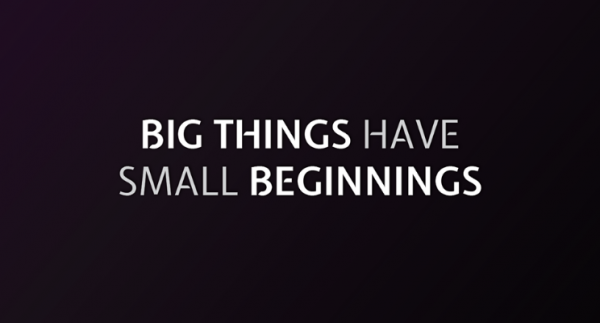
Build Your Dream Network in a Digital World
FORGING POWERFUL RELATIONSHIPS IN A HYPER-CONNECTED WORLD In the social media age, you need a modern roadmap for creating and cultivating meaningful connections to stand out from the crowd and achieve any of your goals, no matter how big or small. If you think networking is scrolling through LinkedIn for new contacts to add or liking, and friending fast and furiously on Facebook, then you really need to rethink your strategy. Cut through the networking noise and start building the powerful, real relationships needed to succeed in our digital world. Companies should rethink and come up with innovative strategies for forming strong relationships—the genuine, mutually beneficial, long-lasting kind—using all of the social tools at your disposal. We really want to set us apart from the rest, and ignite the powerful connections that will lead to major opportunities for success in the New Year 2017 : ) Inspired by: SEE LESS
Read More
CES 2017 spotlights news gadgets galore:
The Consumer Electronics Show in Las Vegas kicked off with a mind-boggling array of gadgets from startup and big technology companies alike. This year’s theme at CES is all about smart devices. the annual Consumer Electronic Show (CES) – arguably the largest and most famous electronics show in the world – in vice city will have lasting impact in the global consumer electronics industry. Many of the exhibitors at CES where once a pre-seed startup that raised funds and now is showcasing their creation. Here are few of these startups that made it for the CES 2017 Tradeshow: Virtual reality hypersuit Hypersuit is an exoskeleton that enables people to experience the sensation of flying – while being completely grounded. It works with a VR headset so you can soar through the infinite virtual skies without worrying about crashing to your doom in real life. And it isn’t just for entertainment, either. The company that created it says the suit can be used for physiotherapy and rehabilitation purposes. It can also be used in the military. Soldiers who have to don out wind suits can first practice with the Hypersuit. Also Read: Google, Oculus, Sony launch Global Virtual Reality Association Hypersuit plans to roll out a rental/subscription programme for the exoskeletion. The company says that in the future, it will also be used to mimic other movements (such as riding a motorcycle). Take a virtual tour on ice Want to know what walking on ice feels without actually walking on it? Japanese company Cerevo has developed a pair of tactile VR footwear called Taclim. Using haptic feedback, it is able to recreate a variety of terrain texture such as grassland, desert and water. It is integrated with Unity, so developers can create custom terrain textures and install them into Taclim. Put a ring on it There are a lot of sleep or heart rate trackers in the market. The Motiv Ring tracker, however, claims to be more effective and user-friendly. First, it is small, light (made of titanium shell), and slips easily onto the finger. Then, it is also waterproof. But besides being more comfortable, putting a tracker on a finger has a more practical function – it is able to take more accurate heart rate measurements. This is evident in many hospitals where doctors use a finger pulse oximeter to measure heart rate. This powerbank can bring you places Immotor GO is a full fledged smart e-scooter. It has GPS tracking, bluetooth speaker, camera, digitally-operated locks, and an alert to warn of potential accidents. The three-wheeled vehicle also has one interesting property: a smart proprietary swappable battery. It is able to shut itself down before it malfunctions, such as overheating scenarios. It is also weather resistant and can be used to charge other devices. Immotor GO can run up to 20 MPH (32 KM) and can be folded up to store in small spaces. It also has a multi-height telescopic handle bar for easy carrying. Feels like second skin Special effects productions in films and games use a combination of suits and cameras to capture an actor’s movement and transpose it onto a virtual character. Smart apparel startup Xenoma‘s solution requires only a suit: one with stretchable wires and 14 sensors inside the fabric. This is called the Printed Circuit Fabric (PCF). Also Read: This wearable could prevent half of premature baby deaths in India The e-skin can also be used to track other activities such as sports and sleeping habits. One remote to rule them all Sevenhugs is a smart remote that allows users to reduce their reliance on their smartphones. It works with a combination of apps and sensors. Once the user assigns an app to a sensor, they can simply point the remote at the sensor to activate the app. For example, users can place a sensor on their front door and assign it to the Uber app. If the sensor malfunctions, users can scroll the menu to find the app. Make any shirt smart Mevics‘ barebones IoT device looks humble but can save users from a world of chronic discomfort. It is placed in the front of the user’s shirt to detect improper posture, such as slouching. Alerts are sent in the form of vibrations. Additionally, it can track other metrics such as steps taken and calories burnt. And hairbrushes, too Everything is getting ‘smarter’ these days, even hairbrushes. Hair care company Kerastase has partnered with consumer electronics company Withings to develop one of the world’s first smart hairbrush to track hair care. The Kerastase Hair Coach has a microphone that tracks hair brushing sounds in order to detect hair conditions such as frizziness, dryness, split ends and breakage. It also has accelerator and gyroscope to detect hair brushing patterns and inform the user if they are applying too much force. Additionally it can detect whether hair is wet or dry. Also Read: Is this finally the right time for the AR/VR industry to shine? All these information are logged and stored in an app. Combined with other external information such as weather conditions, it is able to provide an accurate hair management and quality overview. Don’t fall asleep just yet Sensorwake‘s Oria device can be summed up very simply. It uses two detachable fragrance capsules to induce sleep. The first one emits a unique scent to help the user drift to sleep, the other, emits another a different scent (about 40 minutes later) to induce deeper slumber.
Read More
Crowdfunding for Social Entrepreneurship: 4 Lessons for Making Impact
By Kendrick Mendiola | 27th December 2016 | @ken_mendiola TODAY, many people are lumping towards a new breed of entrepreneurship – one that focuses on making a positive impact while also making some hard bucks. It’s called social entrepreneurship and its intersection with crowdfunding is making a lot of hype with backers despite the innate risks. Why is crowdfunding becoming a go-to source for financing for social entrepreneurs? Not only is it a good way to test the viability of their product or idea, it can also put their venture or social cause in the spotlight and get much needed attention. Their causes may range from a plethora of global issues which resonate with people: climate change, animal welfare, ending hunger, improving education, improving healthcare, waste reduction, poverty alleviation, etc. Social entrepreneurs believe that social entrepreneurship should become the next business model because it allows businesses to thrive with purpose, connect with real peope’s live and their situations, and also because it is what consumers want today. Gregg Fairbrothers and Catalina Gorla in their Forbes article outline three criteria in order for social entrepreneurship to succeed: Is the idea worthwhile? Is it a good idea for the goal? Is there good execution and is it sustainable? Social entrepreneurs are increasingly using crowdfunding to answer those questions. We recently got in touch with Bakeys as one social enterprise which had a lot of success in doing crowdfunding. Bakeys is the maker of the world’s first edible cutlery (spoons, forks, chopsticks, etc.) made primarily from sorghum. They raised US$38,344 from 1,571 supporters in their campaign in India and US$278,784 from 9,293 backers in their U.S. campaign. Our interview with Pradnya Keskar also revealed many lessons for social entrepreneurs and what challenges they have to anticipate if ever they successfully crowdfund their idea. I wanted to highlight the following lessons/tips for crowdfunders: Prepare for delays A lot of times crowdfunders focus on just marketing their campaign rather than planning and not preparing on how to keep their promises and deliver on schedule. What Bakeys did not anticipate was the delay in receiving their crowdfund money, and that affected their execution and timeline. Prepare for logistics Have you thought about delivering your product in 25 countries? How about delivering it in 3 months after your crowdfunding campaign? Delivering the product to thousands? Those are the situations which Bakeys found itself in right after their campaign. Logistics and delivery is critical aside from manufacturing the product. SEE ALSO: How on-demand ridesharing can give e-commerce a necessary boost Give regular and recent updates In Bakeys’ experience, crowdfund backers or pledgers worried about the possibility of a scam because they gave few updates because of the struggle that they had been going through. This was one thing that Bakeys admits that they should have improved. Rather than assuming that supporters would understand their situation, they should have been promptly providing updates on where they are in the process and the troubles that they are going through. Get your campaign beyond 50 percent as early as possible Research shows that the propensity of investment grows as the funds raised increases and 97 percent of crowdfunding failures never get past the 50 percent mark. How do you make use of these studies? Make sure that before you launch your campaign, you ask commitment from your friends and family. That way, you won’t be starting at zero. Generally, 30 percent would be raised by friends and family, another 30 percent from your wider network and associates, and the remaining 40 percent would be funded by the crowd.
Read More
Questioning Crowdfunding for the New Year:
I got introduced to Crowdfunding around 2011. At that time, it was really an underground movement from the hip & creative society. #Kickstarter where the pioneers, and people really responded by simply backing an interesting project. I would notice that people are willing to contribute money to someone just because they loved their idea. Some people would contribute as little as $5 and others would give $100 dollars. Next thing I would see that the project raised one hundred thousand dollars and that their idea had become a reality. Wow, I was amazed that creative artists crafted their dream with people willing to contribute to their vision. Today Crowdfunding is way different and you could say is reaching its peak. With nearly six billion dollars raised just this year. Crowdfunding companies are popping up everywhere, even Africa is raising major money for cleaner water and new technology. Platforms such as; #Indiegogo, #kickstarter, #RocketHub, #GoFundMe, #CrowdCube and #OurCrowd are all major players that brings in millions of dollars of funding to new Startups. People give money in forms of getting a reward, pre-orders, equity and even just because they want to. However, with Crowdfunding reaching such a milestone, problems are starting to transpire. I would say that one major problem today is transparency and communication within the Crowdfunding world. Why can’t we message the founder of the Startup campaign? Why can’t we speak to the individuals that have given funds? Kickstarter, for instance, doesn’t even have a user profile for people to view and communicate with. This is raising the eyebrows of many, including myself. Imagine a Crowdfunding platform where everyone could communicate together. From the backers to the founders, and even Startups talking together about their campaign and success and failures. That would be amazing! And would create more transparency and security in this industry. This is my vision, and hopefully with the help of many it could become a reality. Building an open-source Crowdfunding Social Network is the Future. It is the next Facebook : ). Please let me know your thoughts.
Read More
Crowdfunding corner: 9 steps to a successful fundraiser
Do you need funds to make your dream happen ? Whether you are dreaming of building a life changing tech-startup or passionate for your Romanian art project or working in grassroots to create change or simply dreaming of going overseas, crowdfunding can make your dreams come true. Here are some tips to help you maximise the potential of your crowdfunding campaign. Source: Read more
Read More
Crowdfunding: Funding Companies in the Startup Nation
For many small businesses around the world, crowdfunding – the pooling of usually small investments from a large group of investors – facilitates the ability to start a business without large institutional investments in the company. The portfolio of crowdfunding investors is diverse and is comprised of a broad array of ROIs (returns on investment). Investors may be donating to a specific cause, seeking repayment with interest or claiming equity in the company. In the past year, Israel has loosened some of its regulatory impediments which existed under the Israeli Securities Law and regulations in order to enable and promote crowdfunding as a viable investment alternative for startups and small businesses. Under the new regulatory regime, investors can now come together to help fund companies in the startup nation, without the offer by the company to potential investors being deemed an Initial Public Offering. Read more: Start Up Nation (Source)
Read More
Is This The Next Social Media Giant?
Recently at StreetAuthority, we've been telling readers about a way to invest in some of the most exciting companies the world has to offer -- before they go public on traditional stock exchanges. This is an absolute game-changer for investors. It means, for the first time ever, regular, non-accredited investors can get in on the early stages of what could become the next Google, Facebook, Microsoft and more. And it should go without saying that the potential profits to be had are enormous. Read more: The Next Social Media (Source)
Read More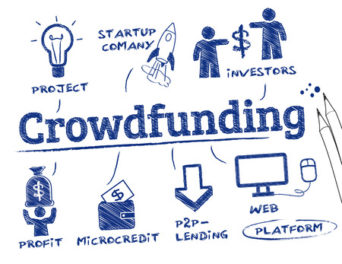
Indiegogo Announces New Pilot Program: No Crowdfunding Campaign Required to Sell Products on the Platform
On Tuesday, Indiegogo announced it was rolling out a new pilot program that allows entrepreneurs to sell products directly on its global crowdfunding platform. The funding portal revealed that entrepreneurs with products that are currently shipping might tap into its community of “innovation seeks” without having to launch a campaign, that way they don’t have to raise a certain amount of money and their page can stay live as long as they’d like. Read More: New Pilot Program (Source)
Read More
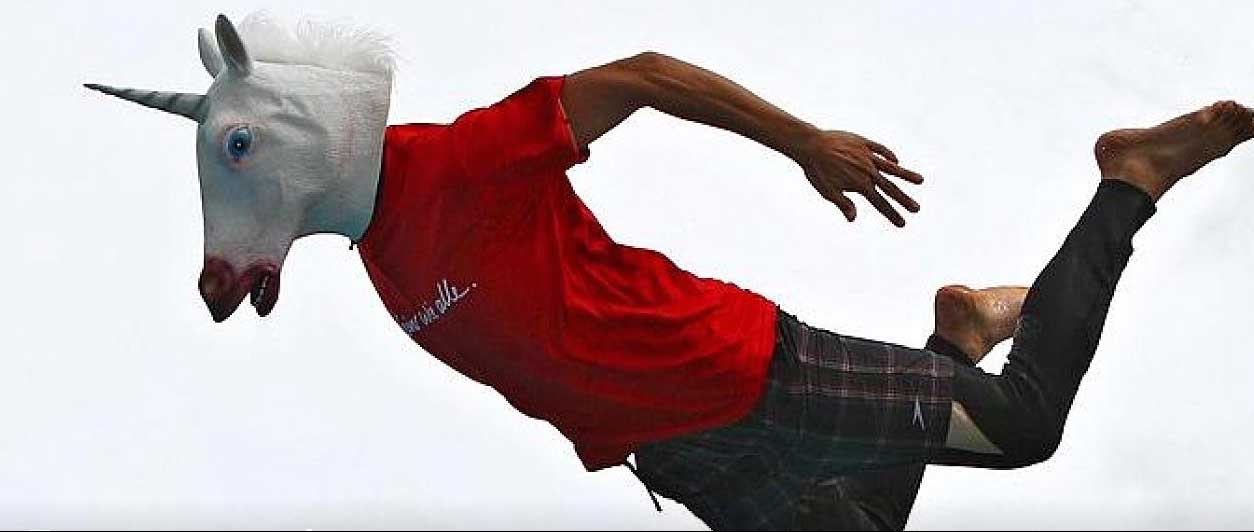
European tech start-ups are on for a record year and US investors want in
Europe's booming start-up ecosystem is flourishing with new regions beyond just London and Berlin becoming significant tech hubs. And an increasing number of companies are finding funding to expand. European technology companies raised $3 billion in the third quarter of 2016, down 17 percent year-on-year, according to a report released by London-based venture capital firm Atomico on Wednesday. Atomico, which was started by Skype co-founder Niklas Zennstrom, launched the report at Slush in Helsinki, one of Europe's fast-growing technology conferences. Source: http://www.cnbc.com/2016/11/30/european-tech-start-ups-are-on-for-a-record-year-and-us-investors-next-facebook-google.html
Read More
The devotion to create LOCODOR
The devotion to create LOCODOR is simple: Crowdfunding Founders & Backers need a community. So we are in the journey on creating one. Today isn’t just about our new site launch (LOCODOR) – it’s about why we launched it. For those people that are part of the CrowdFunding world, we all witnessed a massive expansion in the last few years. Crowdfunding has helped over a million startups get from idea to launch. Most of what startup founders are looking for is raising capital, finding mentors, and acquiring customers. Behind the curtain, we’ve been working on something far bigger than just another platform to fund your startup: Our ambition is our community. Bringing the Crowdfunding community together has always been our greatest goal. This site launch has given us the opportunity to make it happen, and offer our vision for a new voice and a fresh narrative for Founders & Backers alike. Most significantly, we want to create the grounds in which to build a global community of startups who can truly help each other grow in an open-space and free social media network. We think startups desire a new narrative concentrated around transparency, sharing and knowledge of business nitty-gritties. We’re building a community to share together. The Crowdfunding community needs improvements nowadays. We’re led to believe that ideas alone get funded, and that people succeed on Kickstarter and Indiegogo simply by creating a campaign. You don’t become the next Facebook magically. In a world that’s become defined by big funding and big exits, we’ve lost touch with the stuff that matters: building relationships, growing our network, and market yourself. And this is why we are proud to launch LOCODOR. Let’s together build a community for Crowdfunding professionals.
Read More
Social Networking on Locodor
Bringing Creative Projects To Life Together is always better, and this is the motto that has helped the team at Locodor introduce the world's first ever social media crowdfunding platform, encouraging young innovators and creators to get noticed and bring their creative ideas to life. Join our enthusiastic, kind and supportive Locodor crowd. We invite investors and innovators alike to network with each other, find like-minded individuals and share resources, take guidance and inspire each other to become more. At Locodor, our motto is to help individuals start their creative journey with all the help they need through a FREE digital platform. Locodor helps artists, film makers, game designers, software engineers, artists, musicians, designers, and creators who are enthusiastic about bringing something new to the world. We help them find the right resources and the support they need to transform their ideas into reality. Locodor combines social media network features with that of a crowdfunding platform, enabling Locodor members to link your current campaign on Locodor and share it on other social networking sites such as Facebook, Twitter, and LinkedIn to get more exposure. On Locodor, you can build your profile and make new friends who share your interests. Sign up today on Locodor and connect with people who know you and support you!
Read More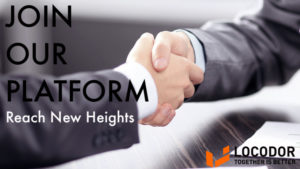
Our Platform
Join Our Platform And Be A Part Of The Next Big Thing Locodor is a one-of-a-kind social media crowdfunding network where innovators meet investors via an informal, interactive and engaging platform. Investing in startups, new products or ideas involves risks -including lack of dividends, illiquidity and loss of investment. Locodor is targeted exclusively at supporters and investors who are sufficiently knowledgeable and sophisticated enough to understand the risks in bringing an innovative idea to fruition. Through our interactive platform, we connect innovators and investors not only to fund an idea but also to help it bring to life with continued financial support by allowing both parties to build long term relationships with each other. Whether it's a project you are currently involved in or a cause you want to raise funds for, start a campaign on Locodor today and attract investors who support your idea or cause. Make a video and add it to your campaign to better connect with potential investors. Locodor is a social network of active crowdfunders. Follow the steps and take your idea to the next level: 1. Create a campaign 2. Upload your existing campaign from other sites, such as Kickstarter, Indiegogo, Seedrs, Ourcrowd, etc. 3. Promote your campaign and get more exposure. 4. Network with innovators and creators. 5. Reach new pledges 6. Attract new investors to invest and help you to bring your idea into the market. 7. Get funded! Locodor is all about presenting your idea through a robust and interactive social media crowdfunding platform that offers you a chance to bring your ideas to life, by getting all the support you need at the right time. Get Empowered With Locodor Today!
Read More